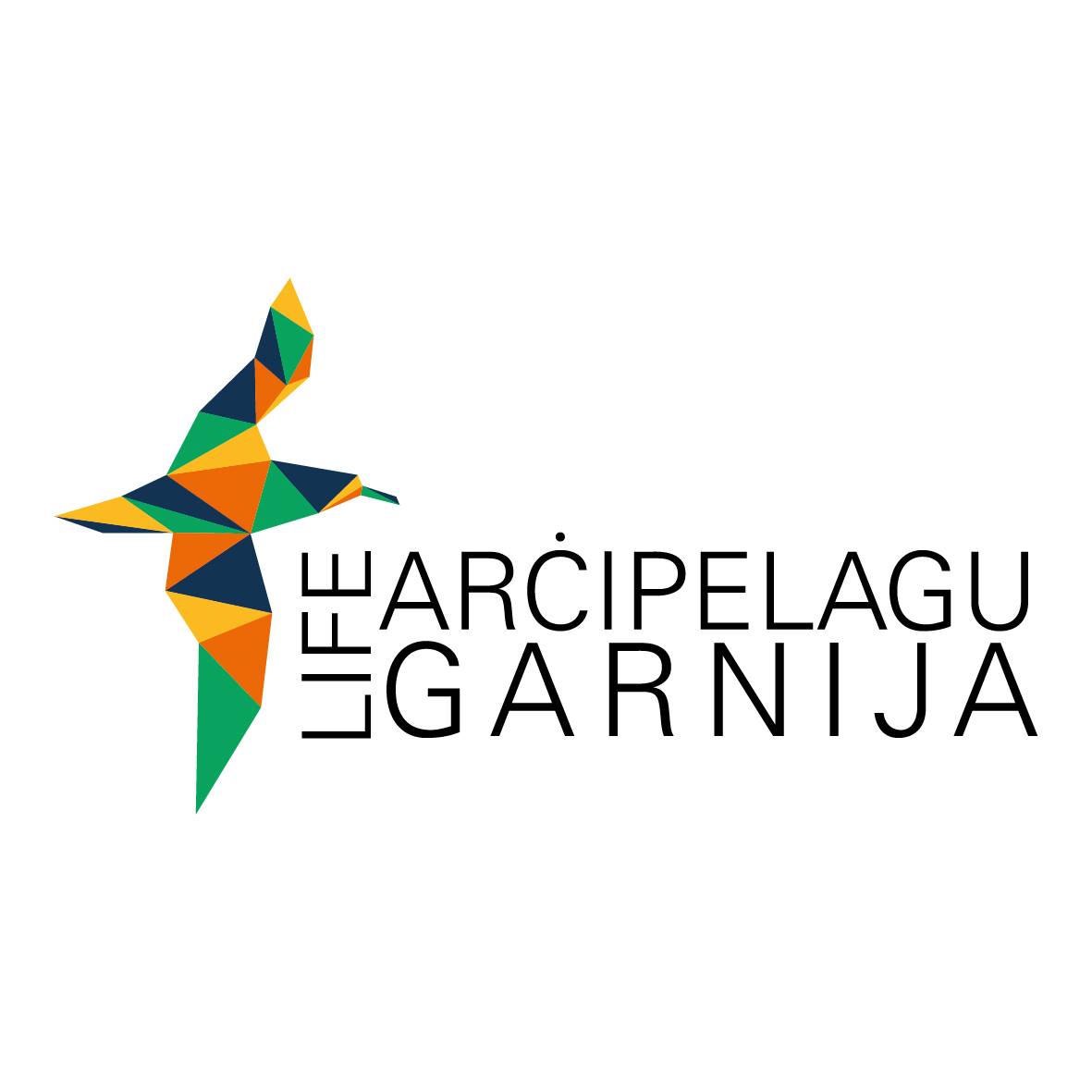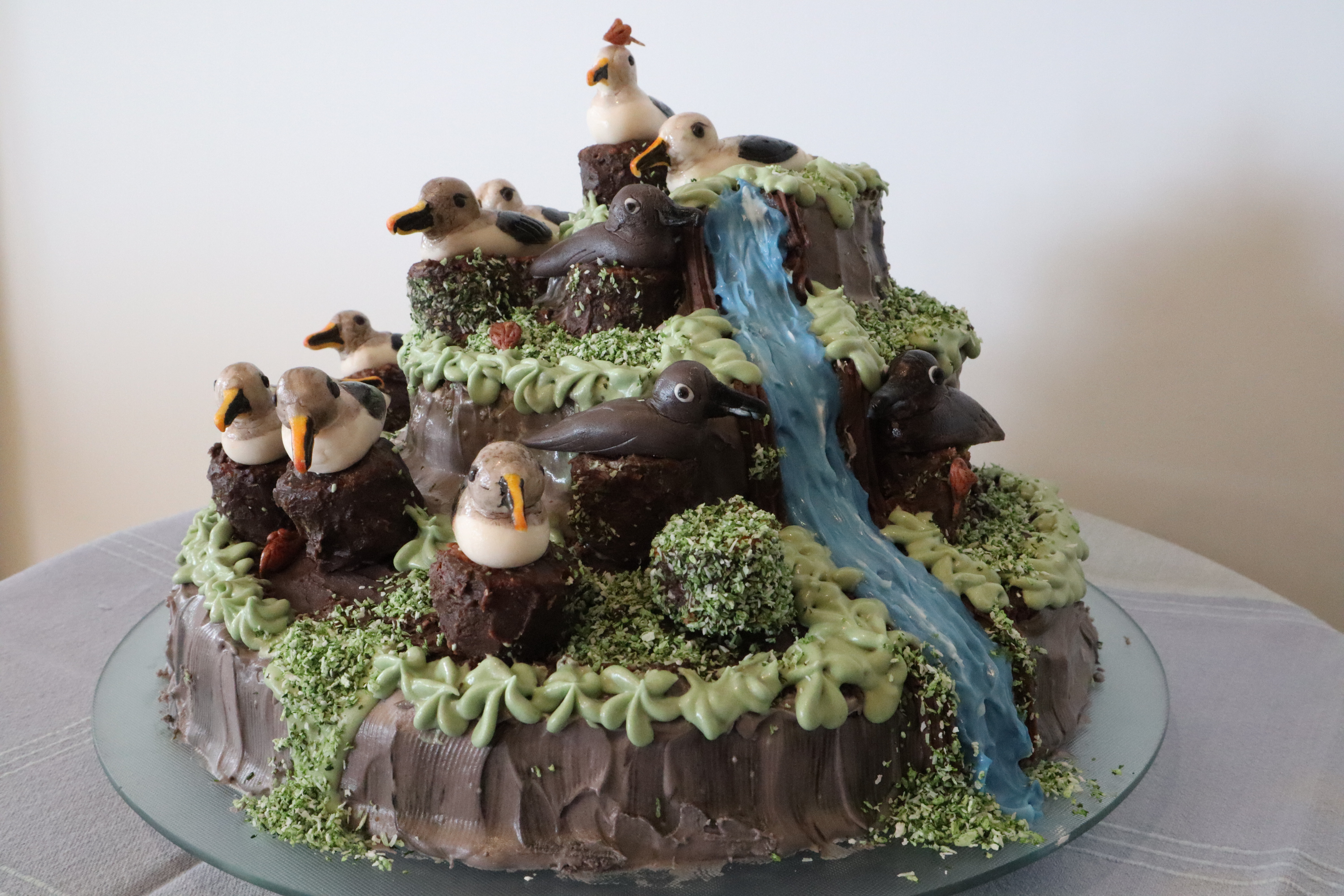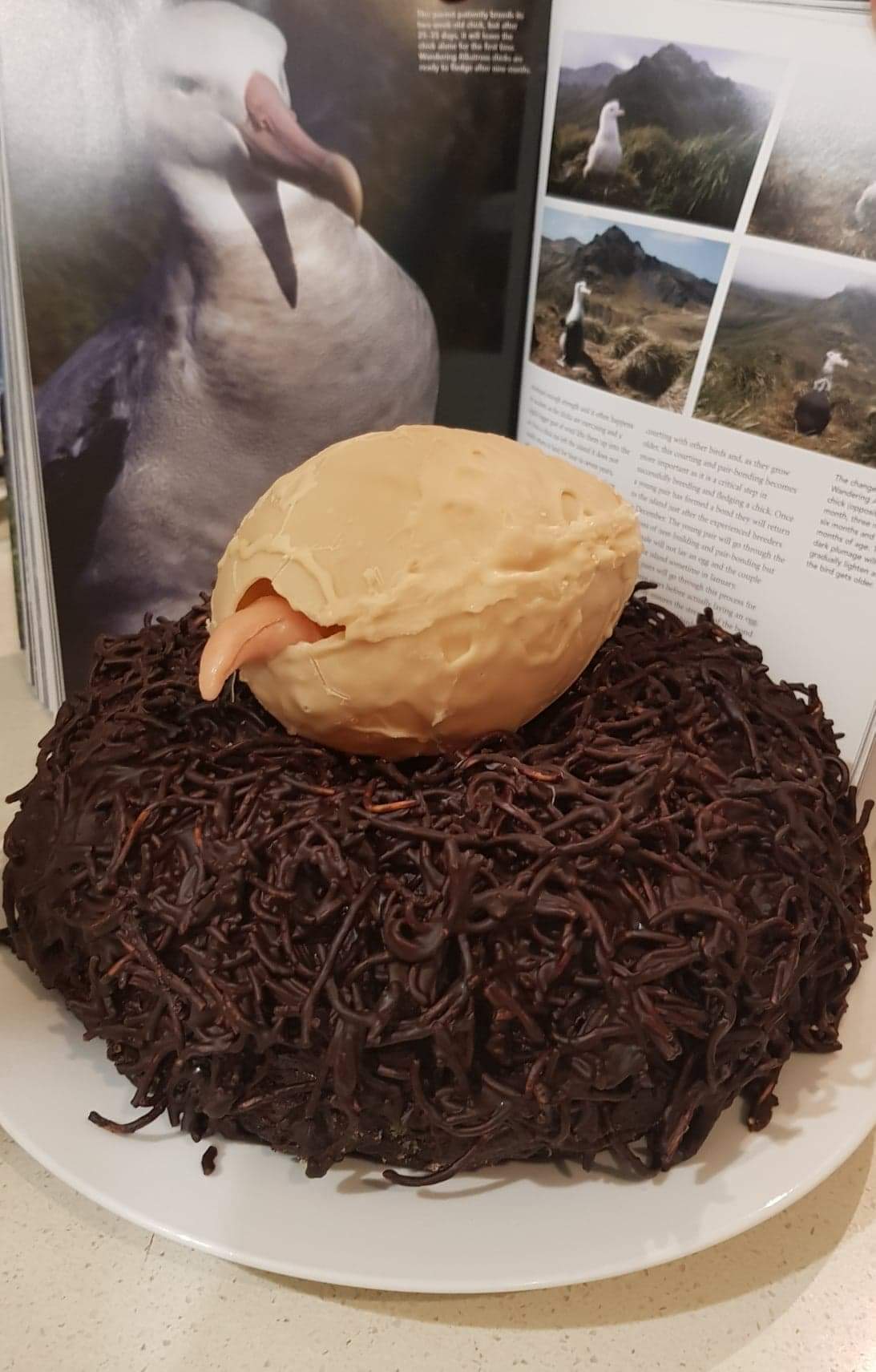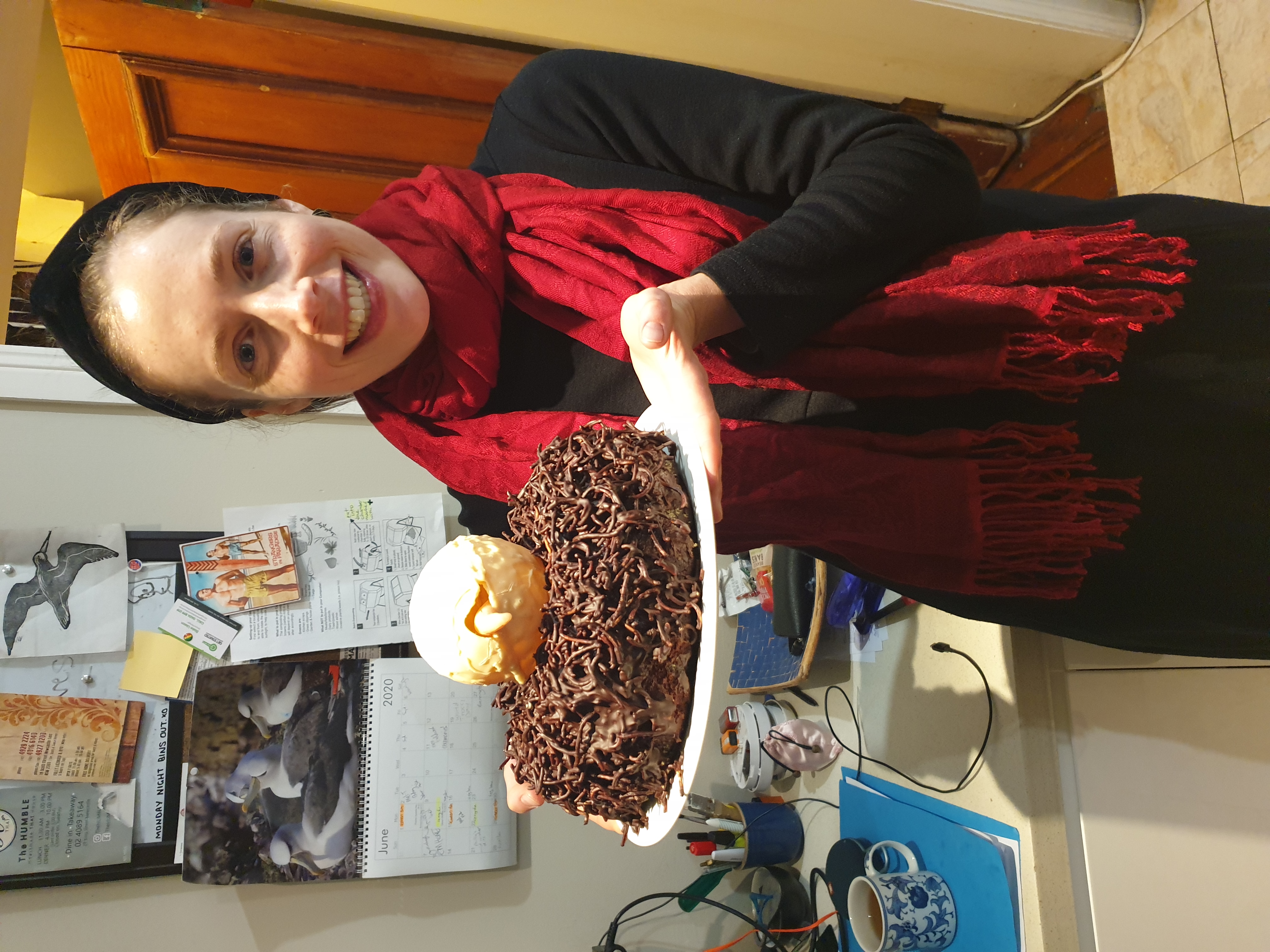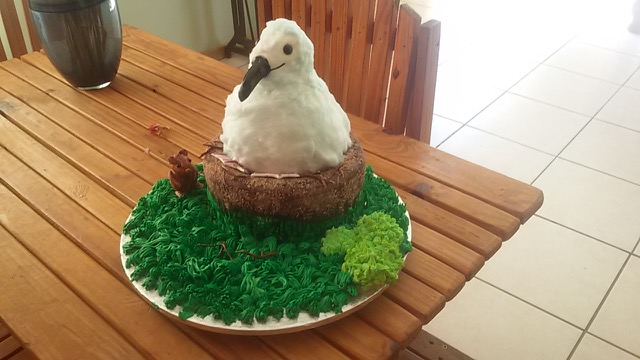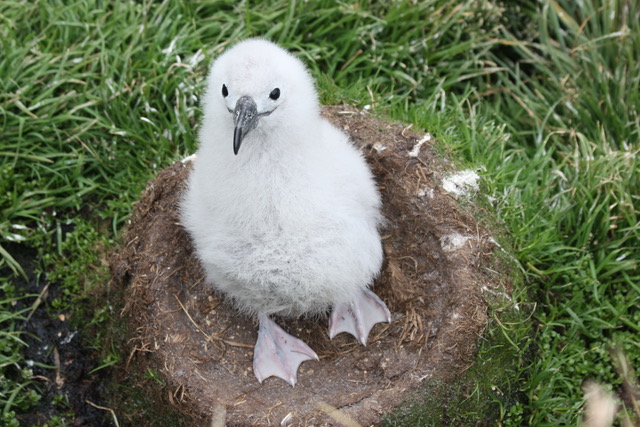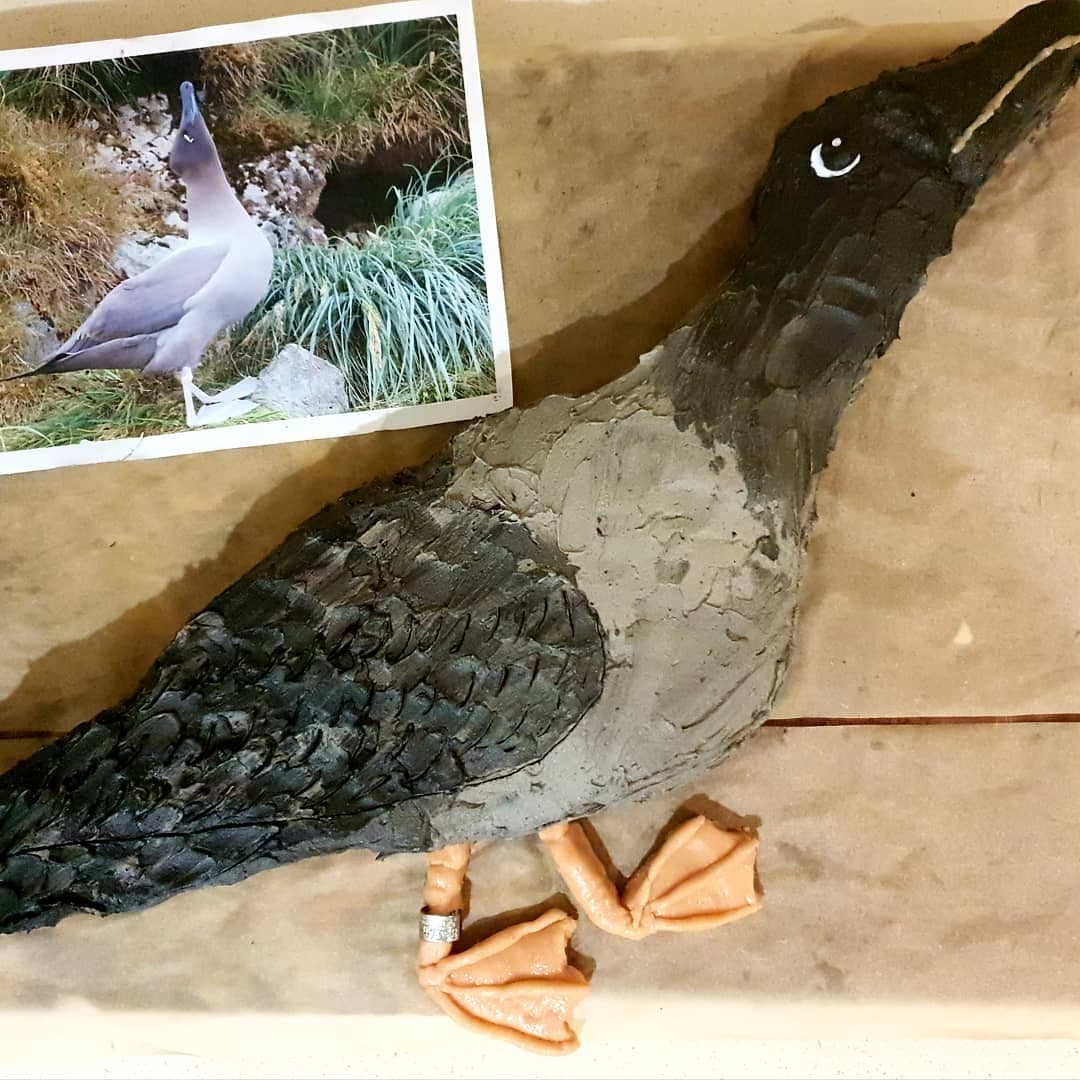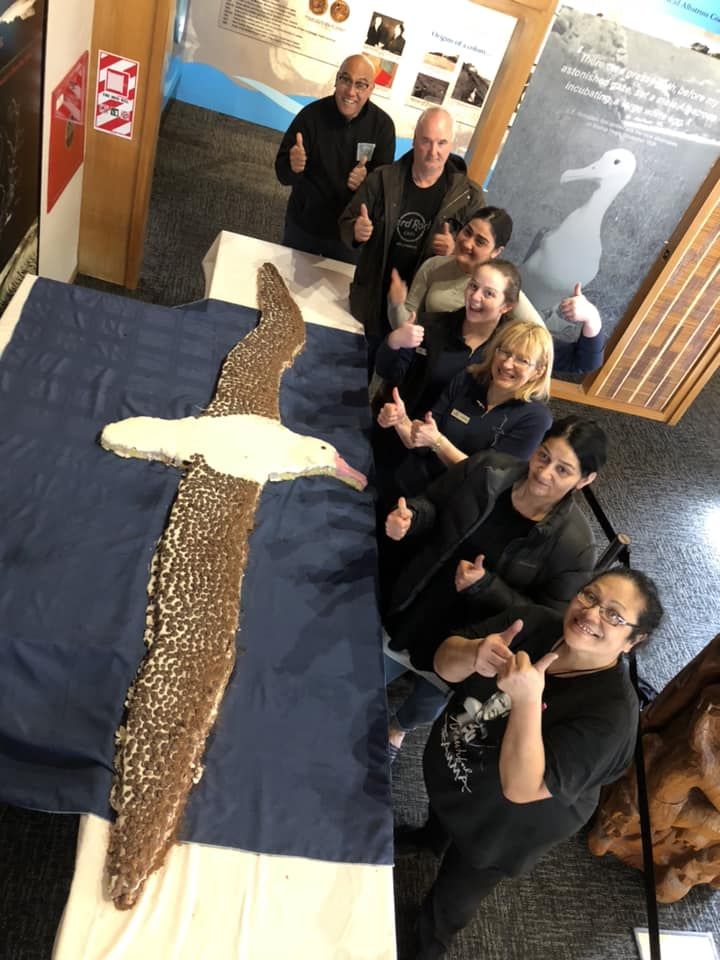
Overall Co-winner: ‘Three-metre Northern Royal Albatross Cake’ by the Royal Albatross Centre
A total of 72 entries was received for the Great Albicake Bake Off in aid of celebrating World Albatross Day last month. Following the announcement last week of the five most-liked cakes by ACAP’s Facebook followers, here follow the five category and overall winners and runners up as decided by three independent judges.
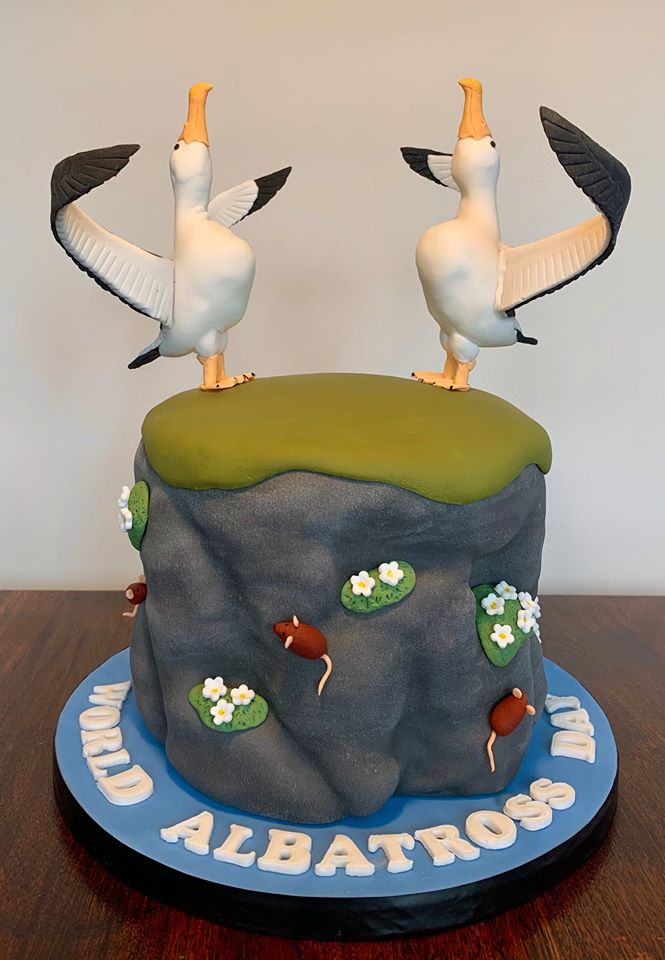
Winner, Best Presentation theme: ‘Gough in Miniature’ by Adam Naylor
Adam Naylor writes: “Adult Tristan Albatrosses [are] displaying on the summit of a chocolate sponge Gough Island. On the cliffs below invasive mice and Sagina plants run rampant, showing the threats to this incredible place and the importance of restarting the Gough Island Restoration Programme.”
Runners Up: 2nd - Jean Purdon (Grey-headed Albatross Chick); equal 3rd - Amy King (‘Gough Island Restoration Cake’), Sheryl Hamilton & Al Wiltshire (‘Albatross Wedding Cakes from 1998’) & Michelle Risi (‘Sooty Vanillatross’).
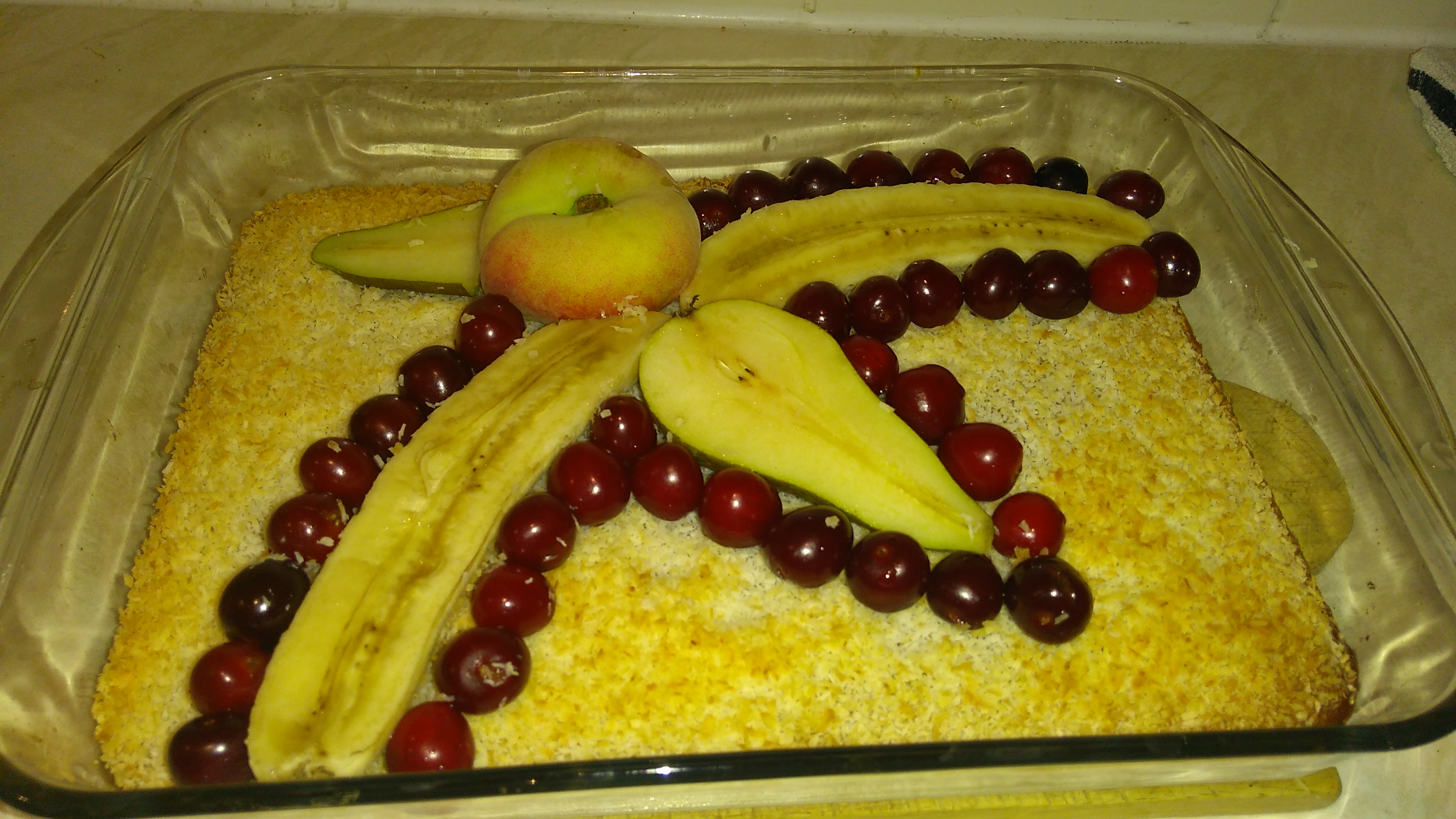
Winner, Most Creative theme: ‘Fruity Albatross Diomedea bananarama’ by Steffen Oppel
Steffen describes his cake: “The most sought-after albatross of any researcher who has spent a long time on remote albatross islands where there is no fresh fruit - ever. Ingredients: banana, pear, peach, cherries, on a layer of fresh coconut sponge.”
Runners Up: Equal 2nd - Liz Morgan (‘Grey heads amongst the Tussock’) & Nini van der Merwe (‘Gough Island Restoration Programme: Fingers Crossed for 2021!’).
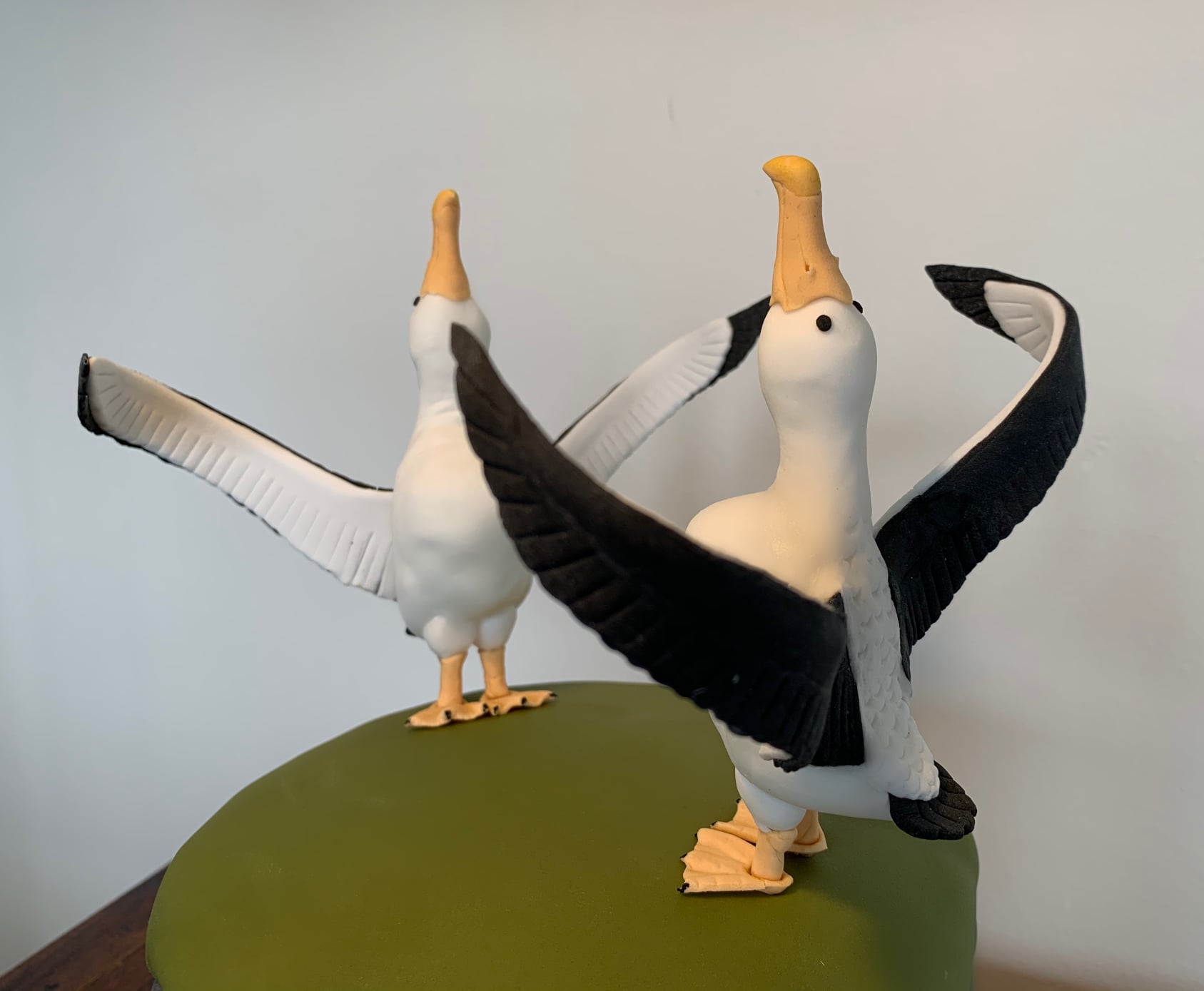
Winner, Morphological Accuracy theme: ‘Gough in Miniature’ by Adam Naylor
See description above. Adam is a Veterinary Surgeon with the Royal Zoological Society of Scotland and is a team member of the Gough Island Restoration Programme.
Runner’s Up: 2nd - Melanie Wells (‘Light mantled Albatross’), equal 3rd - Coco & Tracey Faber (‘Sneezy and Snorky ‘), Sara Larcombe (‘Big Macca’) & Joe Naylor (aged 10, ‘Petey the Albatross’).
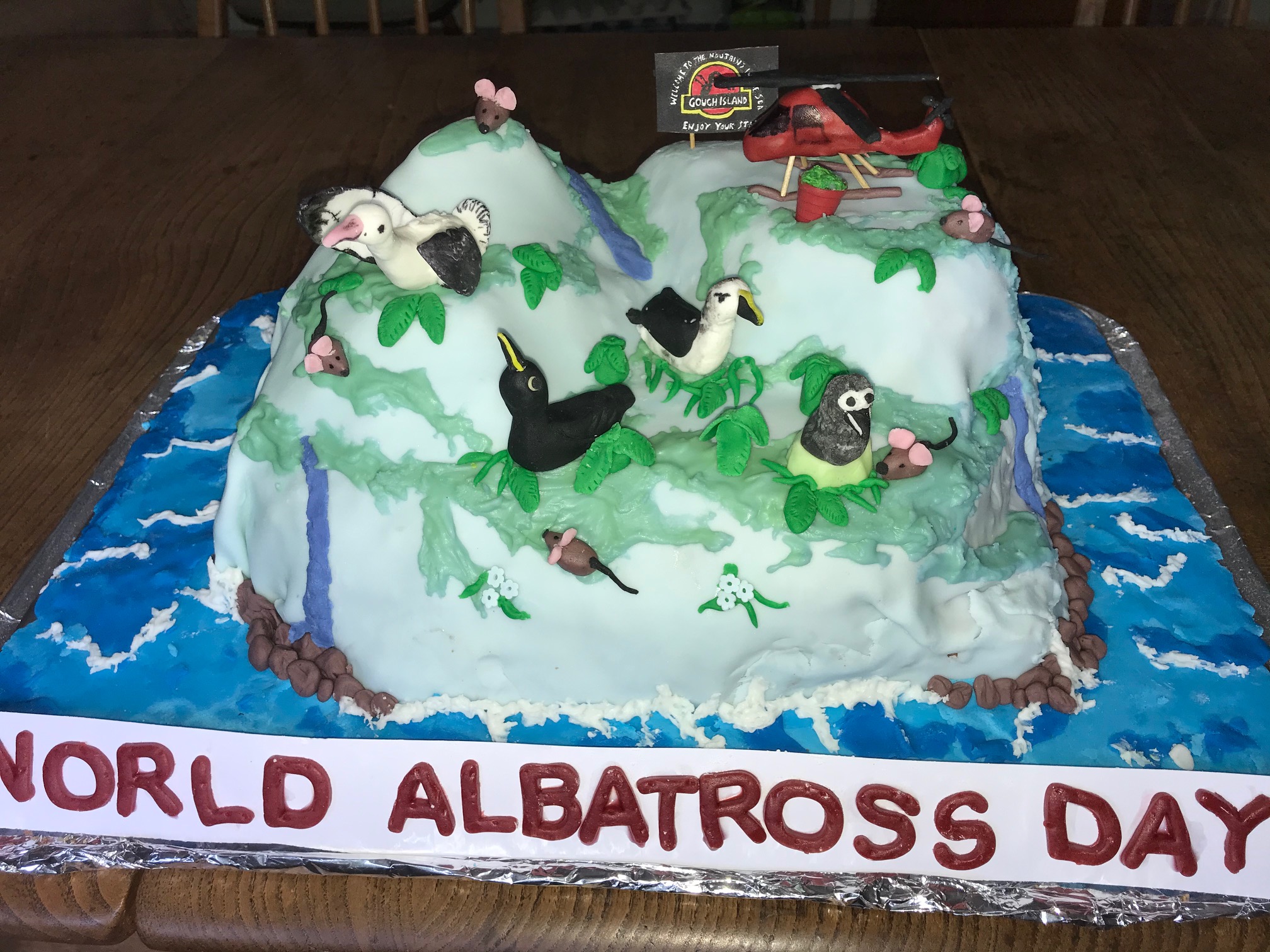
Winner, Eradicating Island Pests theme: ‘Gough Island Restoration Cake’ by Amy King
Amy King (a team member this year of the Gough Island Restoration Programme) writes; “I’ve done an eradication theme cake, for Gough Island. Hopefully having started the project this season, we get to go back out next year! Fingers crossed! The cake has attempted to portray all three species of albatrosses breeding on the island, with a sooty chick (my favourites!), a helicopter ready to fly, and some of the mice and Sagina that are invasive. “It was a rainbow sponge, but the colours didn’t come out so I haven’t cut it for a photo as my sister is having it tomorrow as a birthday cake!”
Runners Up: 2nd - Nini van der Merwe (“Gough Island Restoration Programme: Fingers Crossed for 2021!); 3rd - Janine Schoombie & Karen Versteegh (‘Grey-headed Albatross Ridge, Marion Island’).
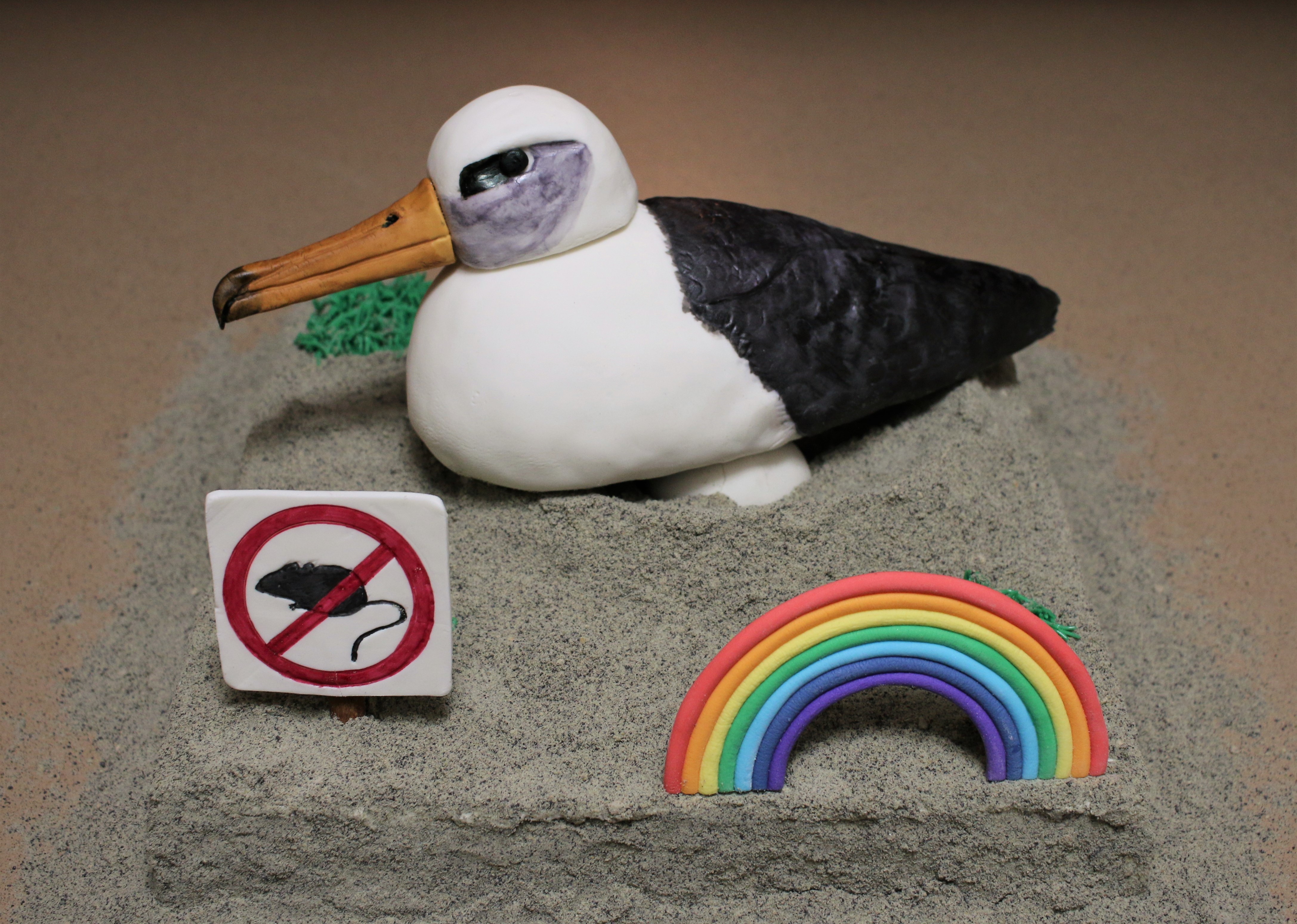
Winner, Rainbow Theme: ‘Wisdom the Albatross Cake’ by Araks Ohanyan
Araks Ohanyan’s ‘Wisdom the Albatross Cake’ wins this theme in honour of COVID-19 care givers and essential workers. She writes: “My cake depicts Wisdom the albatross on a nest at Midway Atoll. The cake is chocolate, and Wisdom herself is made from sculpted rice crispies and covered in fondant. The decorations and the egg are made from fondant as well.
I chose Wisdom as my subject because I think she's an amazing bird that has made a great contribution to the conservation of her species and brought some much-needed attention to the plight of albatrosses worldwide.”
Runners Up: 2nd - Christina Hagen (‘Laysan Rainbow Egg’); 3rd - Meagin van der Westhuizen (‘The Circle of Life Albicake’).
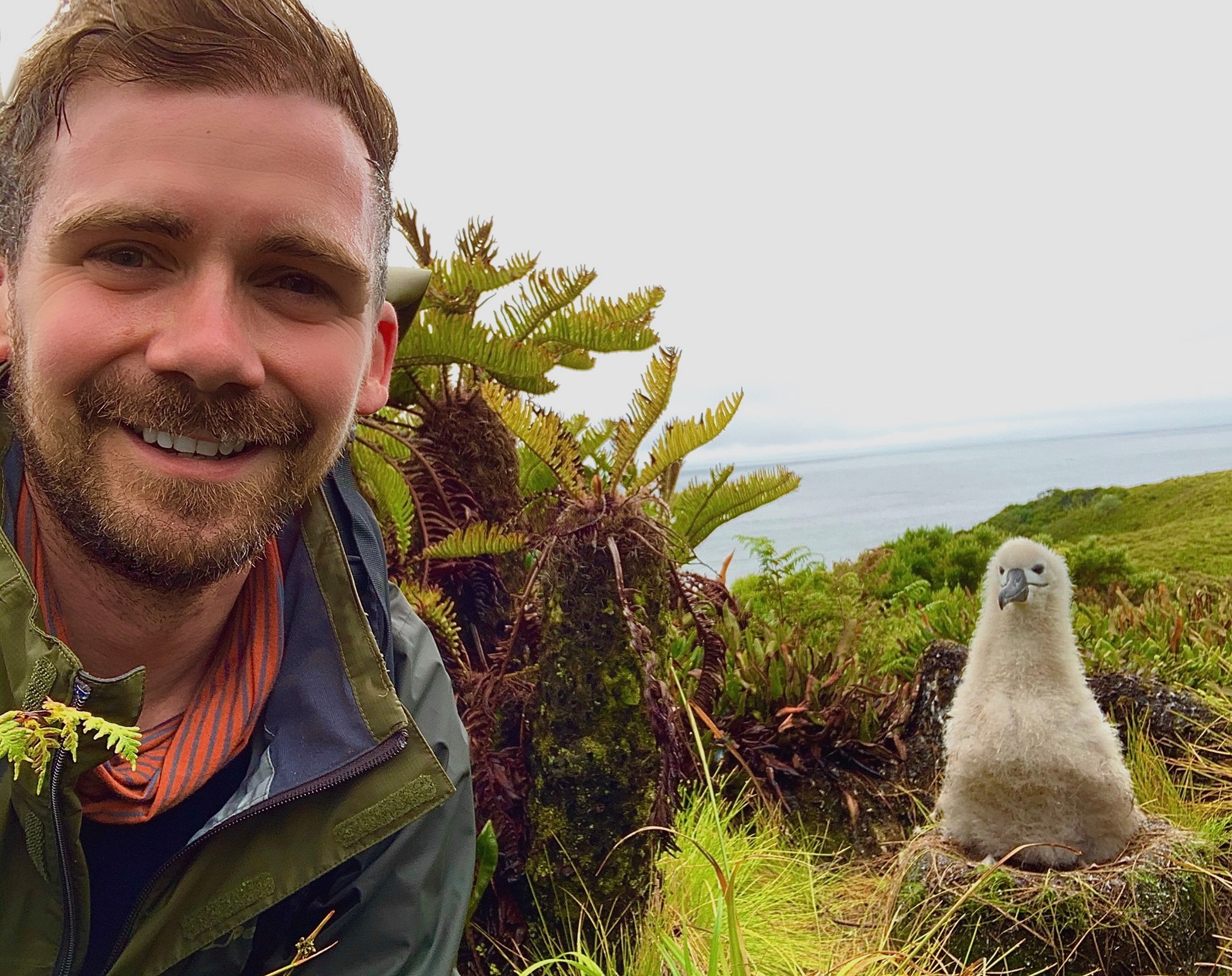
Adam Naylor, Overall Co-winner, with a friend on Gough Island
Overall Winners: ‘Gough in Miniature’ by Adam Naylor and ‘Three-metre Northern Royal Albatross Cake’ by the Royal Albatross Centre
The overall winners (both depicted above) are ‘Gough in Miniature’ by Adam Naylor and the life-sized ‘Three-metre Northern Royal Albatross Cake’, sent in by Chris McCormack, Operations Manager and baked by the team at the Royal Albatross Centre at Taiaroa Head/Pukekura, New Zealand, the world’s only mainland breeding colony of Endangered Northern Royal Albatrosses Diomedea sanfordi.
Runner Up: 3rd - Amy King (‘Gough Island Restoration Cake’).
The runners up and all the other cakes may be viewed in an album on ACAP’s Facebook page. The winners will receive World Albatross Day posters suitable for framing.
With thanks to judges Cleo Cunningham, Tatiana Neves and Keith Springer, competition organizers Melanie Wells and Michelle Risi and all the entrants who baked so many splendid cakes on behalf of albatross conservation.
John Cooper, ACAP Information Officer, 28 July 2020
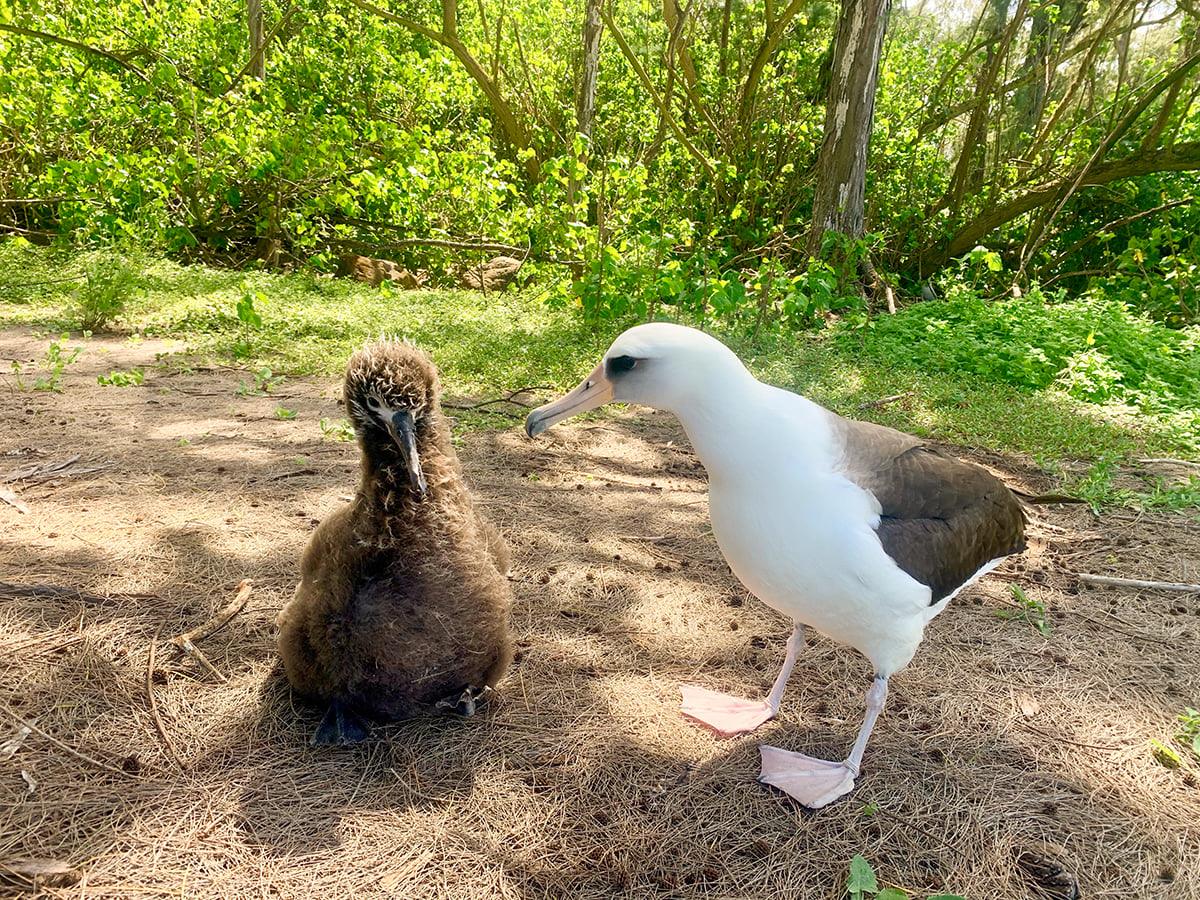

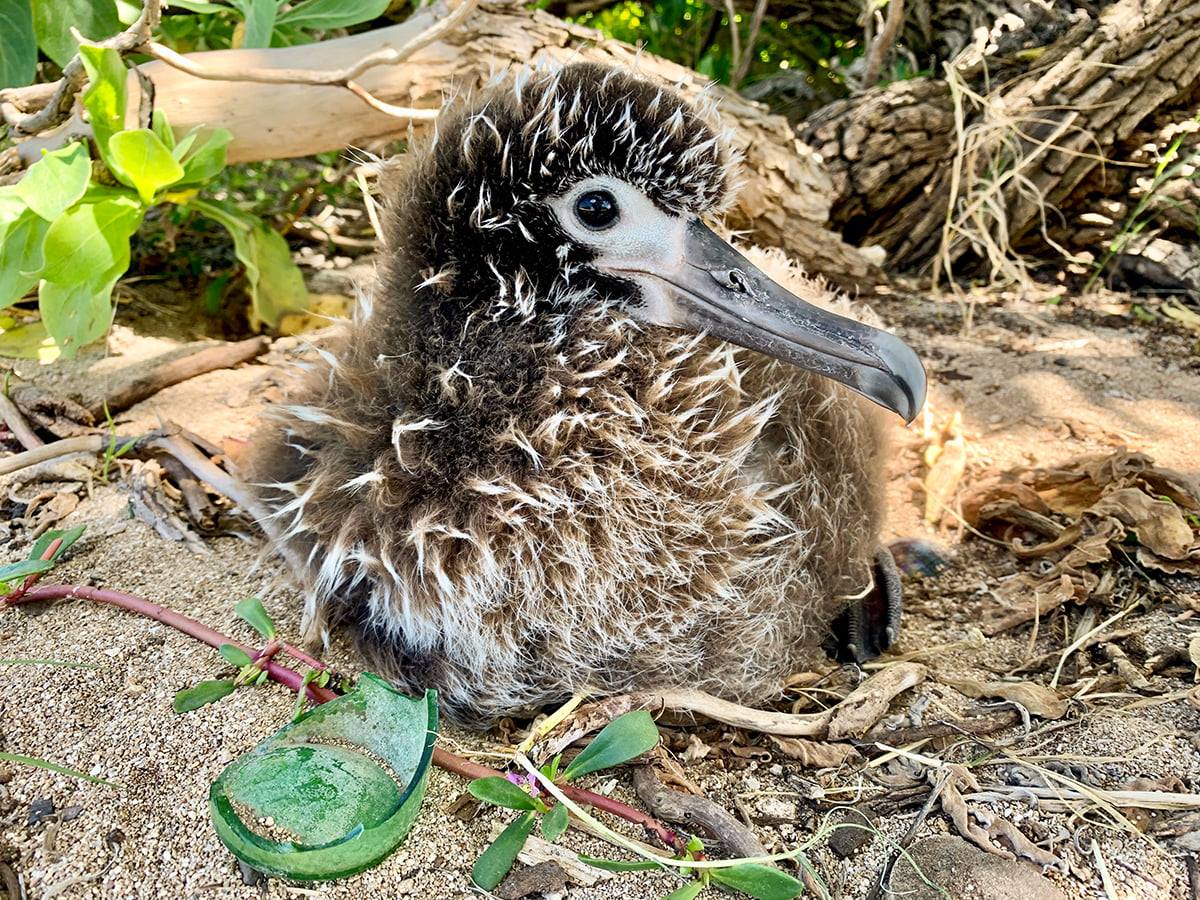

 English
English  Français
Français  Español
Español 